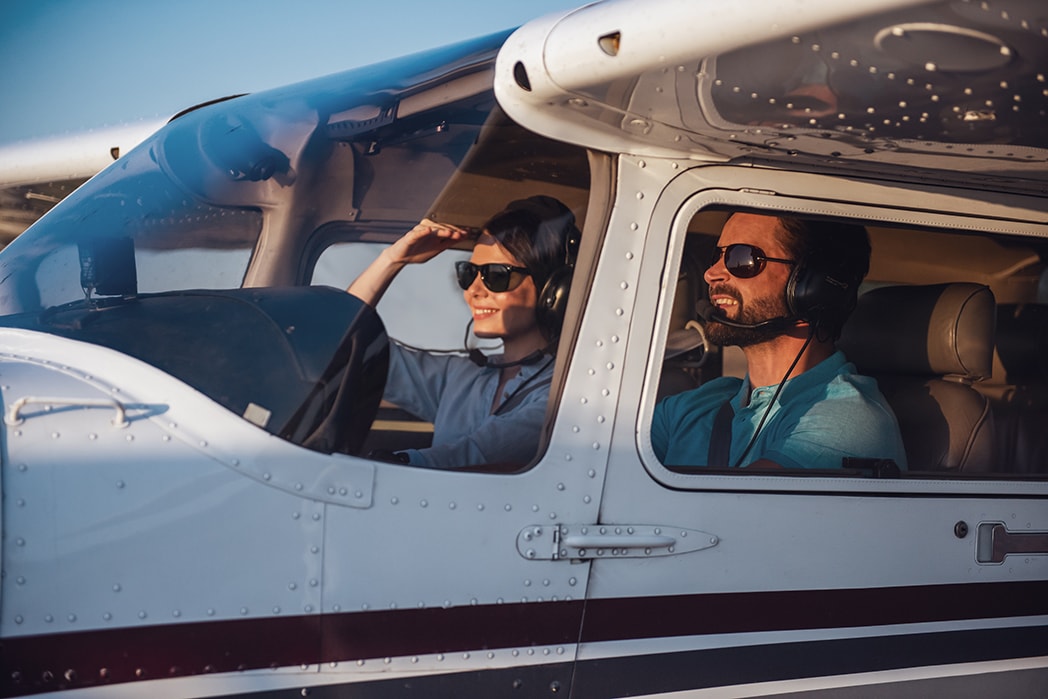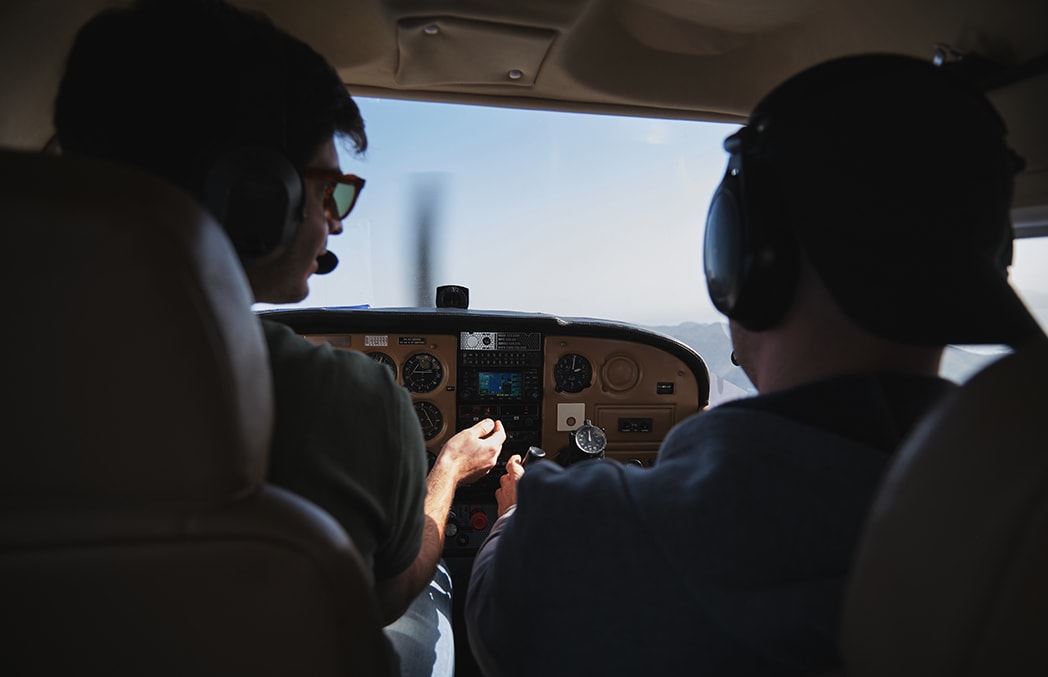Top 5 Inexpensive Flight Training Programs for Pilots
May 09, 2025
Want to become a pilot on a budget? This guide reveals top inexpensive flight training programs and practical tips to help you earn your wings without overspending.
Key Takeaways
-
Choosing the right flight training program, Part 141 for structure or Part 61 for flexibility can impact cost and time of training.
-
Community colleges and flying clubs offer cheap pilot training while also giving you hands on experience and networking opportunities.
-
Creative financing strategies like sharing costs and self-studying can save you big time on training for aspiring pilots.
Understanding Inexpensive Flight Training
Becoming a pilot can be very profitable especially for those aiming to be airline pilots or commercial pilots. The amount of these benefits depends on your specific goals in aviation and career path.
For pilots in training evaluating flight training options, you need to consider when you’ll see a return on investment. In the US, there are two types of flight training programs: Part 141 and Part 61.
You can get licensed with fewer flight hours through highly structured Part 141 programs which can be a more cost effective and faster route. Or Part 61 programs offer more flexibility for those who have other responsibilities to juggle while getting their instrument rating.
To get cheap flight training, you need to plan and consider different approaches. Pilots in training should think what aligns with their goals in aviation, personal budget and learning style while choosing between the training options available to them.
Strategies like choosing more affordable Part 61 programs or getting family help can play a big role in controlling the cost of pilot training costs.
Affordable Flight Schools: Key Considerations

Choosing the right flight school is key to cost effective training. Schools in urban areas tend to be more expensive than those in rural areas. Instructor experience and location also play a part as these can add up to the total cost of your flying education.
You need to consider the difference between Part 61 and Part 141 schools when choosing where to learn to fly. While more rigid, Part 141 programs may have students complete fewer required flight hours before licensing which can mean lower overall cost.
But many budget friendly flight schools are Part 61 and offer more scheduling flexibility and are cheaper.
Don’t forget to consider the cost of renting aircraft too. Rates can vary if fuel is included (‘wet’) or not (‘dry’). Choosing older but well maintained planes at some schools can mean cheaper rental fees too. Joining flying clubs can mean big savings on instructor fees and aircraft rentals – a big plus for students on a budget.
Budget-Friendly Pilot Training Programs

Many flight schools offer pilot training at a lower price point. For example, Florida Flyers has an all-inclusive Private Pilot Course for around $8,000 that includes both in-class ground instruction and flight lessons. This is perfect for those who want to get their private pilot license without breaking the bank, a cost-effective way to get private pilot training.
Kingsky Flight Academy is also one of the schools noted for its affordable training programs in the US. Their goal is to offer top quality education at an affordable price so that becoming a pilot is within reach for students from all financial backgrounds.
Exploring international options can also yield unexpected cost savings. In Romania’s competitive aviation training landscape and lower cost of living means lower costs for piloting education. India is one of the most affordable countries in the world to get comprehensive flying skills due to its low cost of living and competitive market.
With over 50 years of experience, Phoenix East Aviation attracts students from all over the world by offering affordable yet thorough training programs for careers in commercial airlines or other aviation sectors.
Community Colleges and Vocational Programs

Many people don’t realize community colleges are a great option for affordable pilot training. These schools offer commercial pilot training at a fraction of the cost of traditional flight schools and students graduate with much less debt.
Hands on experience is a key part of vocational programs, complementing classroom instruction and is essential for developing practical pilot skills. These programs often have pathways to get FAA certifications or even a commercial pilot license, which can open up more job opportunities after graduation.
A big plus of community college training programs is the flexibility they offer. This allows students to balance their education with work or personal obligations more easily and have better control over time and money.
Flying Clubs and Shared Aircraft Costs
Joining a flying club can help reduce the costs of pilot training. As a member you get access to aircraft at economical rates and lower rental fees as the cost is shared by all members. This saves you a lot of money overall.
These clubs give you access to a range of aircraft models so you can get experience in different flight systems. This is important for becoming a well rounded pilot.
Being part of a flying club also gives you valuable networking opportunities through other pilots and club members. This sense of community is key to building personal and professional connections in the industry.
Flying clubs are especially helpful for student pilots looking for affordable ways to gain flight hours and connect with experienced aviators. Join us and get more out of your pilot training while sharing the benefits.
Creative Financing Options for Flight Training
Flight training doesn’t have to be just about loans and scholarships. Pilots in training should consider other ways of funding and smart financial planning to manage their training costs. Earning credits at flight schools, sharing costs with other students and getting temporary jobs in the aviation industry are all practical options.
Many flight schools offer flexible payment plans to help students who need to pay in installments that fit their budget. Bartering services for flight time is another way to reduce overall training costs by 15-30%.
Jobs at airports and flight schools not only provide financial help but also hands-on experience especially when assisting flight instructors, which can also offer valuable learning opportunities.
For pilots who want to pay for their education without going into debt, setting a savings goal – like $500 a month – might be helpful. Approaching the journey to becoming a pilot incrementally, step by step, will make the financial commitment more manageable.
To become a commercial pilot without borrowing money requires budgeting. With planning and creative financing, those who want to become pilots can strategize their budget – turn their dream of becoming a commercial pilot into a reality.
Cost-Effective Ground School Strategies

To save on ground school costs you need to have a budget that breaks down the total cost over the time frame you expect to complete. One way to save in this area is self-study which can save you $500 to $1000 on ground school fees.
Using free resources like the FAA, YouTube videos and free online courses can help you minimize your outlay. Studying hard before actual lessons helps you use your in-flight hours more productively.
Looking for an affordable and flexible ground school that fits your learning style?
Check out the Briefing Room Squadron from Flight Nerd Air Force an online community and course platform designed for:
-
Aspiring Licensed Pilots: Get the support and structure you need to ace your FAA written exams.
-
Flight Simulator Aviators: Learn how to apply real-world aviation knowledge in your sim cockpit.
-
Flight Nerd Enthusiasts: Dive deeper into aviation topics just because you love to learn.
Whether you're working toward a license or just passionate about planes, the Briefing Room Squadron helps make aviation education accessible, engaging, and budget friendly.
Having a solid foundation of aviation knowledge not only saves you money but also makes the whole training process more efficient. Studying hard on the ground is key to saving during actual flight time.
Utilizing Flight Simulators to Cut Costs
Using simulators is a great way to reduce the cost of flight training. These allow students to practice flying without the high fuel costs associated with real world flying, so overall training costs are greatly reduced.
In these simulated environments students can safely experience real cockpit scenarios and hone skills for emergency procedures and broader skills like judgement calls.
Desktop simulators have less environmental impact than traditional airborne training methods. This modern way not only speeds up learning but also gives aspiring pilots a solid foundation to tackle the real world flying.
Scheduling and Planning for Cost Savings
Scheduling and planning are key to saving money in flight training. Reviewing the materials before each lesson will get more value out of your time in the air. Choosing longer lessons can consolidate practice time and reduce pre and post flight procedures which means more flight time.
Flying during off peak times can get you lower rates and overall lower costs for instrument training. Hiring a Certified Flight Instructor (CFI) who teaches remotely can offer more flexible scheduling than traditional in person teaching.
Keeping an accurate logbook is important to track your progress and achieve your goals within the training curriculum. A well planned schedule and thought out planning can save you a lot of money in flight training.
Frequently Asked Questions
What are the main differences between Part 61 and Part 141 flight training programs?
Part 141 programs are more structured and typically require fewer flight hours, making them faster and possibly cheaper. In contrast, Part 61 programs offer greater flexibility, ideal for those with other commitments.
Choose based on what fits your schedule and learning style best!
How can flying clubs reduce flight training costs?
Flying clubs can cut flight training costs by allowing members to share expenses like maintenance, fuel, and insurance, which eases the financial burden.
Plus, they provide access to different aircraft and great networking opportunities!
What are some creative financing options for flight training?
You can get creative with your flight training financing by assisting flight schools for credits, trading services for flight time, or even taking temporary aviation jobs.
Remember, many schools also provide flexible payment plans to help you manage costs.
How can flight simulators help in reducing training costs?
Flight simulators can really cut down training costs by eliminating fuel expenses and offering a safe space to practice emergency procedures. This means students can focus on improving their skills without the high costs associated with real flights.
What strategies can help save money on ground school?
To save money on ground school, consider self-studying with free FAA materials and prepping thoroughly before lessons.
Creating a detailed budget and timeline can also help you manage your expenses better.
